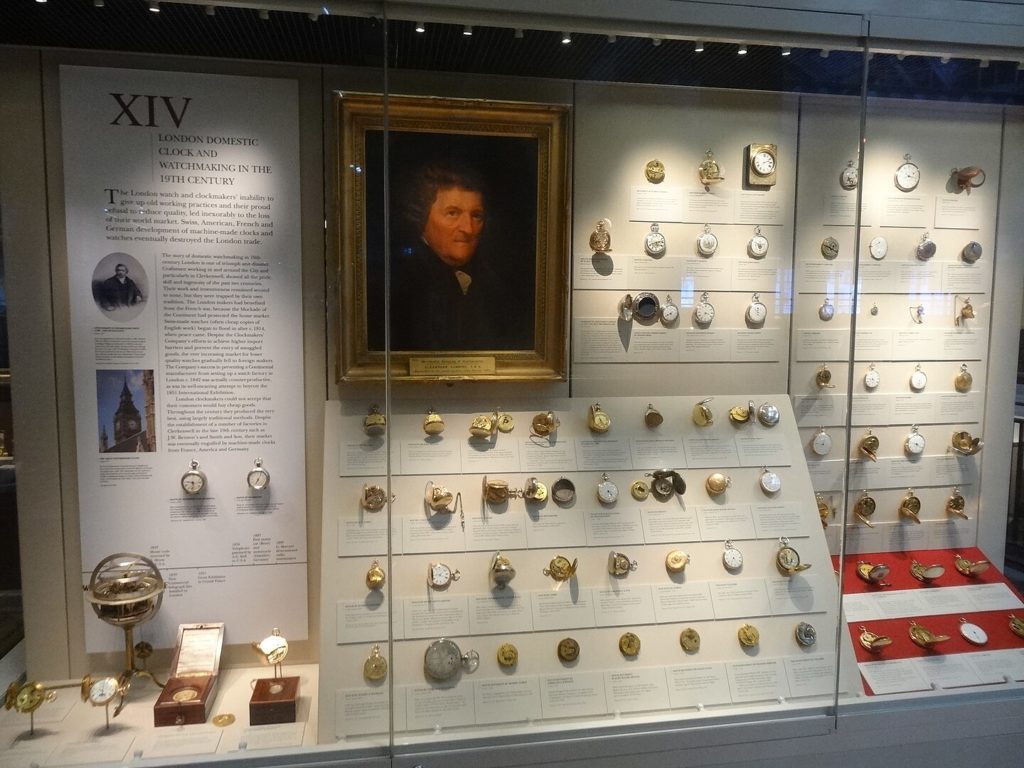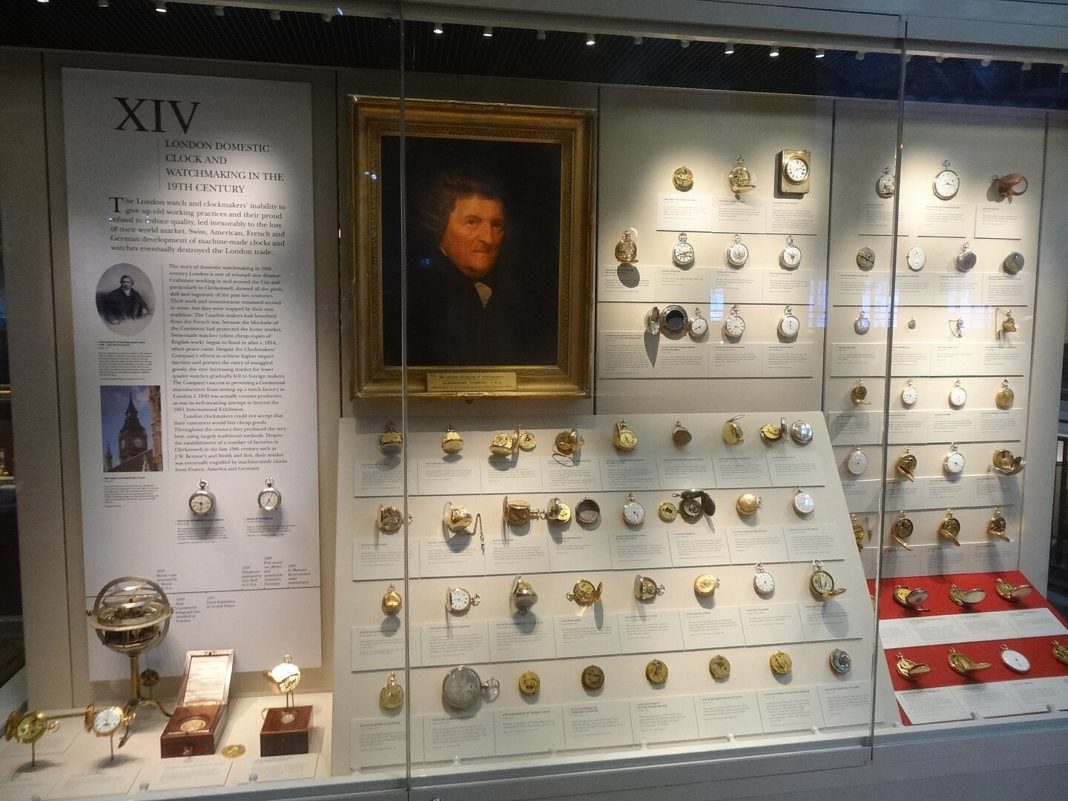The world’s oldest clock museum is the Clockmakers’ Museum in London, England. It was founded in 1814 by the Worshipful Company of Clockmakers, and it houses a collection of timepieces dating from the 16th to the 20th centuries.

The collection on display includes rare horological portraits, and numbers some 660 English and European watches, 30 clocks, and 15 marine timekeepers, which are broadly arranged in chronological order, starting in the fifteenth and sixteenth centuries at the east end (with some European objects), but soon moving to the seventeenth century and the emergence of a clock and watch trade in London, initially populated by immigrant craftsmen. The gallery moves forward in time as it progresses westwards through the eighteenth and nineteenth centuries and is completed at the west end by recent and current objects, such as watches made by and other items associated with George Daniels, a former Master of the Company, and an explanation of the wristwatch now being manufactured by Charles Frodsham in Sussex.

To support horological education, the museum has an information board at the west end, emphasizing the possibilities for new students and entrants to the field of horology, particularly at West Dean College, Birmingham School of Jewellery, part of Birmingham City University, and the British School of Watchmaking
Since 2015 it has been housed in a gallery provided by the Science Museum in South Kensington, having formerly been located in the Guildhall complex in the City of London since 1874, where it first opened to the public.
The museum is free to visit. It is a fascinating place to learn about the history of timekeeping. It is a must-visit for anyone interested in clocks, watches, or the history of science and technology.
According to the Internet














